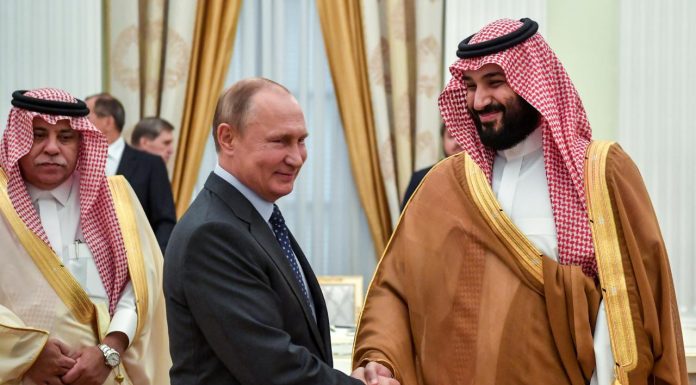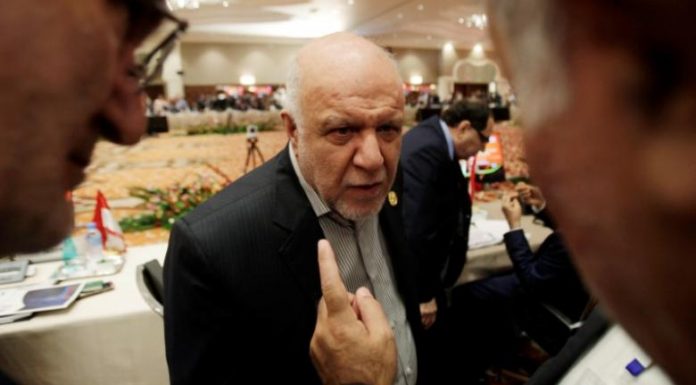By Alex Lawler, Rania El Gamal and Vladimir Soldatkin
LONDON/DUBAI/MOSCOW, June 19 (Reuters) – OPEC’s month-long wrangle over a date for its next meeting has highlighted a changing dynamic in the group with decisions increasingly driven by long-time leader Saudi Arabia in tandem with non-OPEC Russia, angering member states like Iran.
Decision-making has never been easy in the Organization of the Petroleum Exporting Countries, which groups 14 Arab and non-Arab oil producers, some of which have longstanding rivalries.
But tensions have become more pronounced as Iran has sought a bigger say while its exports tumble due to U.S. sanctions and as a new Riyadh-Moscow axis has developed. OPEC sources say this means future meetings and decisions may be even more fraught.
OPEC members finally agreed on Wednesday to meet on July 1 followed by a meeting with non-OPEC states on July 2, switching from previously agreed dates of June 25-26.
Agreement was reached after a tussle over timings that coincided with rising tension in the Gulf over attacks in May and June on oil tankers. Washington and Riyadh have blamed Tehran for the attacks, which Iran has denied.
OPEC sources said Russia was behind a suggestion to push the meeting back until after G20 talks due to be held in late June, a stance backed by Saudi Arabia.
“Some people might think the Russians were actually members of OPEC,” said one OPEC source.
A second OPEC source said: “This has never happened before, usually OPEC decides on a date and that’s it.”
The original timing would have meant the meeting took place just before an end-of-June deadline for the expiry of a deal on output curbs that was agreed between OPEC and non-OPEC producers, an alliance known as OPEC+. The next gathering in Vienna will decide whether to extend the pact.
“Iran is maybe upset about not having as much power over what happens,” said another OPEC source.
Iran, a founding OPEC state, has been pushed down the group’s production rankings as U.S. sanctions imposed in a nuclear row have cut its crude exports to about 500,000 barrels per day (bpd) in May from around 2.5 million bpd in April 2018.
U.S. sanctions have also hurt Venezuela, another OPEC founding member whose economic problems had already sent its oil industry into freefall. Its exports have tumbled to below 800,000 bpd from well above 1 million bpd last year.
PROTAGONISTS
At the same time, exports from Iraq, an OPEC state which neighbours Iran, have climbed, while exports have also surged from the United States, which is not party to the OPEC+ deal.
OPEC with Russia and other non-OPEC producers are now set to decide whether OPEC+ extends or adjusts the supply deal that involves cutting 1.2 million bpd. The deal has been implemented since Jan. 1.
Saudi Arabia and Russia, which together account for more than 40% of the oil produced by the OPEC+ group, have become the main protagonists of the global supply pact. But Riyadh’s close coordination with Moscow on OPEC affairs has rattled others.
Iranian Oil Minister Bijan Zanganeh said this month that some OPEC members — comments widely seen as directed at Saudi Arabia — had turned OPEC into a political hub against two other founding members, namely Iran and Venezuela.
“I believe that these countries are taking OPEC towards collapse, but we want OPEC to be preserved; these two countries will undermine this organization by instigating infighting in OPEC,” he said, according to Iran‘s Oil Ministry news agency SHANA.
Feuding between majority Sunni Muslim Saudi Arabia and predominantly Shi’ite Iran have often emerged in previous OPEC meetings, reflecting long-running rivalry outside of the organization.
The two nations have been battling for years what are seen as proxy wars in Syria and Yemen. The tanker attacks in the Gulf have now added to tensions.
(Additional reporting by Ahmad Ghaddar in London; Editing by Edmund Blair)



